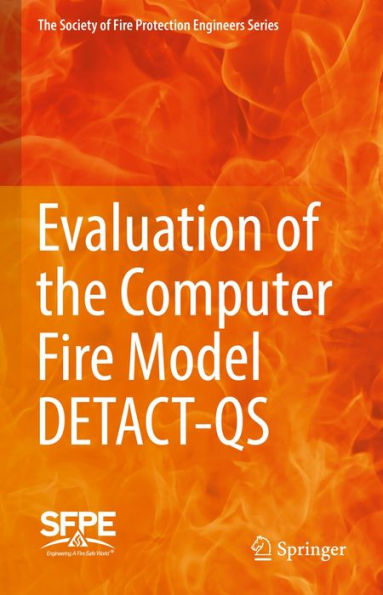This engineering practice Guide, based on the DETACT-QS program, describes a model for predicting the response time of ceiling-mounted heat detectors/sprinklers and smoke detectors, installed under large unobstructed ceilings, for fires with user-defined, time-dependent heat release rate curves. The Guide provides information on the technical features, theoretical basis, assumptions, limitations, and sensitivities as well as guidance on the use of DETACT-QS. Evaluation is based on comparing predictions from DETACT-QS with results from full-scale fire experiments conducted in compartments with ceiling heights ranging from 2.44 m (8 ft) to 12.2 m (40 ft) and peak fire heat release rates ranging from 150 kW to 3.8 MW. Use of this model with building geometries or fire characteristics other than those used in this evaluation may require further evaluation or testing.
This engineering practice Guide, based on the DETACT-QS program, describes a model for predicting the response time of ceiling-mounted heat detectors/sprinklers and smoke detectors, installed under large unobstructed ceilings, for fires with user-defined, time-dependent heat release rate curves. The Guide provides information on the technical features, theoretical basis, assumptions, limitations, and sensitivities as well as guidance on the use of DETACT-QS. Evaluation is based on comparing predictions from DETACT-QS with results from full-scale fire experiments conducted in compartments with ceiling heights ranging from 2.44 m (8 ft) to 12.2 m (40 ft) and peak fire heat release rates ranging from 150 kW to 3.8 MW. Use of this model with building geometries or fire characteristics other than those used in this evaluation may require further evaluation or testing.

Evaluation of the Computer Fire Model DETACT-QS

Evaluation of the Computer Fire Model DETACT-QS
eBook (1st ed. 2022)
Related collections and offers

Product Details
| ISBN-13: | 9783030822958 |
|---|---|
| Publisher: | Springer-Verlag New York, LLC |
| Publication date: | 01/01/2022 |
| Series: | The Society of Fire Protection Engineers Series |
| Sold by: | Barnes & Noble |
| Format: | eBook |
| File size: | 19 MB |
| Note: | This product may take a few minutes to download. |
